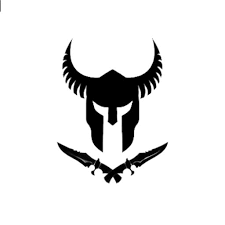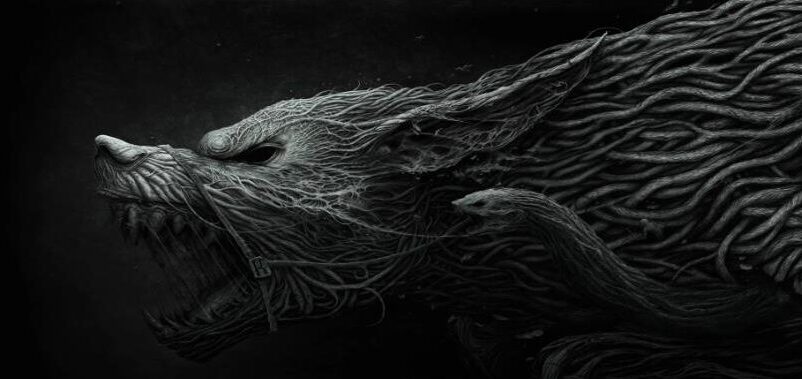In the rich Norse mythology, wolves play a fascinating and often dreaded role.
Wolves have always held a unique and captivating place in Norse mythology. These creatures are associated with powerful deities, formidable creatures, and cataclysmic events. In this article, we delve into the intricate roles of wolves in Norse mythology, exploring iconic figures such as Fenrir, Sköll, and Hati, and uncovering their profound significance within this ancient tradition.
Summary
ToggleFenrir : The Gigantic Wolf
Fenrir, Loki’s offspring, stands as one of the most renowned wolves in Norse mythology. This monstrous wolf is depicted as constantly growing, menacingly gigantic. The gods feared his destructive power, leading them to attempt his capture using a magical chain known as Gleipnir. Prophecy foretells that Fenrir will ultimately break free during Ragnarök, the twilight of the gods, to devour the world.

Who Killed Fenrir ?
In Norse mythology, the god who slays Fenrir is Vidar. During Ragnarök, the Nordic apocalypse, Fenrir breaks free from his chains and threatens the gods. Vidar, Odin’s son, intervenes by wearing a special shoe crafted for this momentous occasion. This shoe is made from leather and remnants of shoes worn by all mortals. Vidar thrusts his foot into Fenrir’s maw, suffocating and killing the beast. Vidar’s courageous act marks a pivotal moment during the Norse end of the world, allowing the gods to prepare for the world’s rebirth after Ragnarök.
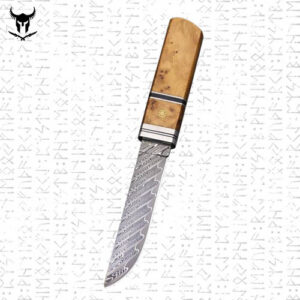
Finnish Puukko, Hunting Knife with Damascus Steel Blade and G10 Handle
⚒️ A blade, a legacy — forge yours now.
Buy nowThe Power of Fenrir :
Fenrir, the colossal wolf of Norse mythology, possesses both immense and formidable power. His physical strength is extraordinary, enabling him to break any chain or restraint that attempts to hold him. Additionally, Fenrir possesses the unique ability to grow incessantly, becoming larger and more powerful over time. This continuous growth is one of the reasons why the Nordic gods sought to contain him.
Sköll and Hati : The Celestial Pursuers
Sköll and Hati are two wolves tasked with chasing the sun and the moon across the sky. Their names mean “Tracker” in Old Norse, and they are destined to catch these celestial bodies during Ragnarök. The capture of the sun and the moon by these wolves signifies the end of the Norse world.

Why Mention Sköll ?
The name Sköll holds great significance in Norse mythology as one of the celestial wolves responsible for pursuing the sun across the sky. Pronouncing the name Sköll rests upon understanding its role in Nordic cosmology.
Sköll and his brother Hati serve as trackers of the sun and the moon, respectively. Their name, meaning “Tracker” in Old Norse, reflects their mission to chase these celestial bodies through the heavens. Uttering Sköll’s name serves as a reminder of their vital role in the Ragnarök prophecy, where they will eventually catch the sun and the moon, plunging the Nordic world into twilight and signaling the end of the world as known.
Garmr : The Guardian of Hel
Garmr is a fierce dog or wolf tasked with guarding the entrance to Hel, the realm of the dead in Norse mythology. Described as a formidable creature, Garmr is ready to protect the souls of the departed against any intrusion. Garmr is mentioned in various sagas and poems, emphasizing his role as the guardian of the deceased.

Which Dog in Ragnarök ?
The dog associated with Ragnarök in Norse mythology is Garmr, sometimes spelled as Garm. While Garmr is not as widely mentioned as wolves like Fenrir, Sköll, and Hati, he plays a specific role in the Ragnarök prophecy.
Pronouncing the name Garmr recalls a key element of Ragnarök, where it is foreseen that Garmr will break free from his guard duty to participate in the series of cataclysmic events that mark the end of the Nordic world. Like many other Norse mythological figures, Garmr embodies the role of a guardian and protector, but his release will also herald chaos and transition into a new cycle of creation and destruction.
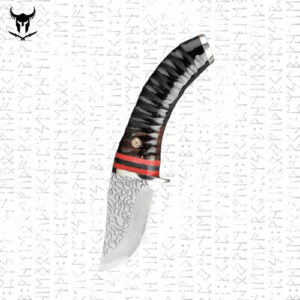
High-Quality VG10 Damascus Steel Lapland Hunting Knife for Outdoor Adventures
⚒️ A blade, a legacy — forge yours now.
Buy nowOdin and His Two Wolves : Geri and Freki
The god Odin, leader of the Norse gods, has two loyal wolves by his side: Geri and Freki. They symbolize his power, bravery, and warrior status. In some tales, Odin even transforms into a wolf to travel incognito among mortals.
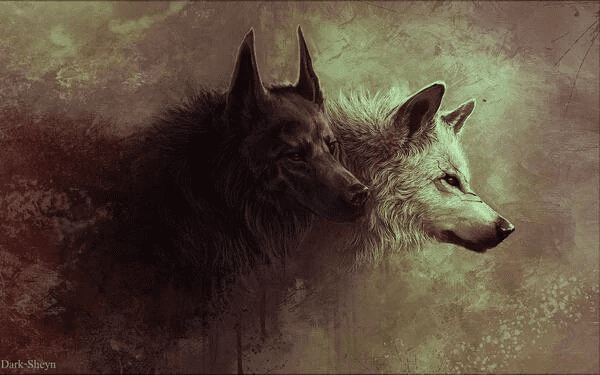
The Roles of Geri and Freki alongside Odin :
Geri and Freki are two wolves who hold significant roles alongside Odin, the supreme god of Norse mythology. Their presence as Odin’s companions adds an intriguing dimension to the god’s character.
Geri and Freki are often described as symbols of Odin’s power as a warrior and chief of the gods. The name “Geri” means “greedy” in Old Norse, while “Freki” means “voracious.” Their names reflect the nature of these wolves, who are recipients of the food Odin leaves on his table, as he only sustains himself on wine.
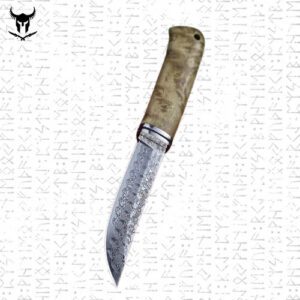
Lapon Hunting Knife Viking in Shade Wood and Damascus 22.5 CM
⚒️ A blade, a legacy — forge yours now.
Buy nowPronouncing the names Geri and Freki serves as a reminder of the importance of the relationship between Odin and these two wolves. They are more than mere pets; they embody power, bravery, and the ability to relish battle—central themes in Norse mythology. In some tales, Odin can even transform into a wolf to travel incognito among mortals.
FAQ
The most famous wolves in Norse mythology are Fenrir, Sköll, Hati, Garmr, and the wolves associated with Odin, Geri and Freki.
Odin, the chief god of the Norse pantheon, is associated with two loyal wolves, Geri and Freki. He also transforms into a wolf in some tales.
In addition to the main wolves, various generic terms for “wolf” are used in various sagas and poems, but they do not play a central role.
Conclusion
Wolves hold a significant place in Norse mythology as symbols of power, destiny, and chaos. Their roles in eschatological events, such as Ragnarök, highlight their cosmological importance. These fascinating creatures add an element of mystery and danger to the Nordic universe, continuing to captivate the imaginations of mythology enthusiasts worldwide.
We hope this article has helped you gain a deeper understanding of the meaning and role of wolves in Norse mythology. If you have any questions or would like to learn more about a specific aspect of this mythology, please feel free to ask in the comments below.
